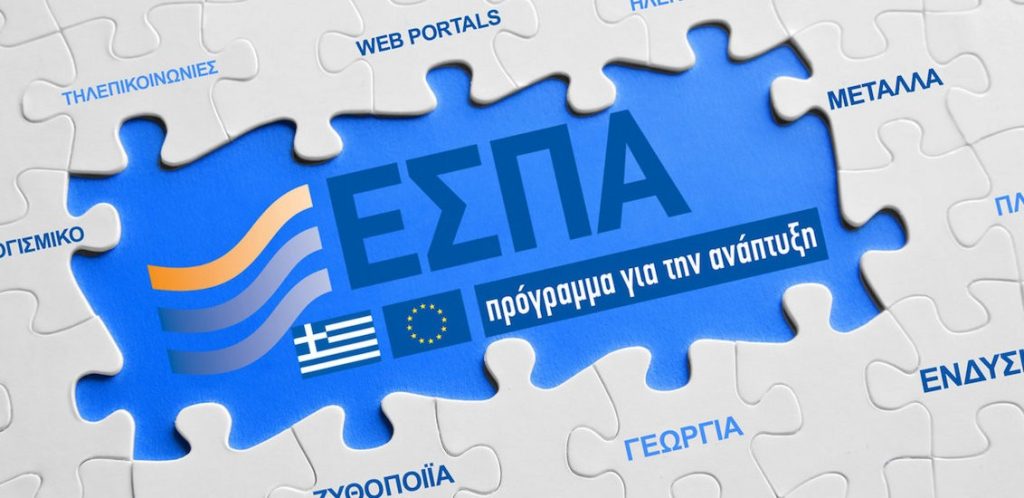
On the course of the new ESPA 2021/27 as well as the ESPA 2014/20, the competent Deputy Minister of Development & Investments, Mr. Yiannis Tsakiris, refers in his interview.
How is the existing NSRF developing and to what extent will we have a "smooth" closure at the end of 2023, in the sense that the objectives will be implemented and there will be no reallocation of funds in the programs?
The absorption of the NSRF is very satisfactory and is developing as we had planned. We have achieved 80% absorption when in July 2019 we undertook - and given that its implementation began in 2014 - it was at 25%. Having reached 80% absorption, the program will close "smoothly" and we have used all the tools in order to achieve this. We have overcommitted and will probably need some transfers from program to program. But this will be for the benefit of the programs, but also for the country itself, because it ensures that all resources will be channeled to the market.
Is absorption also an expense or not necessarily?
Absorption equals expenditure applies. Any disbursement of an amount is made by us to an institution, it must have utilized the relevant fund. Even an advance payment for a project is considered an expense. What is certain is that there are no funds "parked" by us in institutions.
Which programs of the existing NSRF currently show good absorption and which are "struggling"?
When we first took over, the worst program in terms of absorption was EPANEK, the Competitiveness & Innovation Operational Program for small and medium enterprises (SMEs). Now in this program we have the most overcommitments and it is the program that runs best of all. We had similar problems in the Regional Operational Programs, which are now being implemented at a rapid pace. I don't see any program "fighting". Also, we should not overlook the special features of each program. For example, TIESD (Transport Infrastructure, Environment and Sustainable Development) includes large projects that give large costs towards the end of the program implementation. This is taken into account in the design and that's why we don't think there will be problems with the absorptions.
Where are we in relation to the new NSRF? I am referring to the preparation of Monitoring Committees, Administrative Authorities, etc. which are necessary tools for its implementation?
We are in the last step of creating the implementation mechanism of the new NSRF. The Monitoring Committees have been established and their first meeting remains for their activation and to approve the first development actions. The Committees, being convened in collaboration with the European Commission, are scheduled to meet within the next few weeks. The first meeting scheduled is for October 20, 2022 and is the meeting of the Monitoring Committee of the "Competitiveness" Sectoral Program. After each Committee has met and taken the relevant decisions, the first calls for aid, project implementations, etc. will gradually begin to go out.
Does the preparation you mentioned apply equally to the Sectoral and Regional Programs of the new period, or are the Sectorals ahead of the Regionals?
There is no separation in preparation. The Regional Programs are at the same level of preparation as the Sectoral ones.
When do you estimate that the payment of the new NSRF will be made and what will it cover?
I think there is the theoretical and the practical. Theoretically, we do not know what the first payment will be as we also have phasing projects, i.e. projects that are paid for by both NSRFs. It could be, for example, that the first payment concerns a project implemented in the existing NSRF. Among the new projects, the invitation that will come out first concerns the action of the "Digital Transition of SMEs" to be followed shortly after by the invitation for the "Green Transition of SMEs". Both actions will be financed by the Sectoral Program of Competitiveness.
What are these two invitations and what are they for?
These are two emblematic invitations and concern the two basic elements which will help to increase the competitiveness of SMEs. We are talking about the competitiveness of SMEs which has been left behind due to the 10-year crisis in our country, but also due to the pandemic crisis. A key component for a company to be competitive is that its fixed assets, specifically its productive assets, be modern and productive. Today, there is a big shortage of new, modern productive fixed assets, less energy-intensive, therefore "green" and "digital" and therefore more productive. And that is precisely where the two invitations focus, that is, for Greek SMEs to acquire modern fixed assets in order to increase their competitiveness.
What are the main features of the two invitations?
Both calls will have a budget of 1 billion. euro. And this can only be the beginning. If there is demand, their budget will increase. The first call to be issued is the "Digital Transition of SMEs", which will have an initial budget of 300 million. euro. The invitation will be pre-published in October with the aim of making businesses familiar with the new NSRF implementation framework. The second call, that of the "Green Transition of SMEs", has a budget of 700 million. euros and will follow very soon. Both calls will be open until the budget is exhausted. I point out that the proposals of the companies that will be included in the invitations, will not be evaluated and will be implemented with the FIFO (First In First Out) process.
However, they will have a strict implementation schedule for their investment. That is, there will not be the phenomenon of money being involved in an investment plan that is not implemented, depriving another company of resources that can implement its own investment plan. The company that will want to join the invitation should have a mature investment and have the same participation available in order to proceed immediately. Otherwise, if the investment is not implemented, it will be excluded and the next one will proceed.
How will this opt-out be done?
Depending on the type of investment, a corresponding implementation time will be provided. A procurement will have a shorter implementation time than another project, e.g. installation of an information system. If the given implementation time elapses, the investment will be delisted. The details will be seen in the invitation which will be issued soon.
Give 300 million euros for the "Digital Transition" and 700 million euros for the "Green Transition" of SMEs. And these amounts may increase. Also, the Recovery Fund gives 442 million. in the "Digital Transformation" of SMEs and many more in corresponding programs. Maybe there is an excess in it and the resources are not absorbed? Also, why does the opposition accuse you of being a government that only supports the big ones and leaves the little ones to their fate?
You put it right. First of all, there are very few large companies in our country. Everything that is said that we only support the big ones is clearly fake news. The money that has been given in the last three years to support SMEs through the NSRF and the Recovery Fund and the new NSRF exceeds 10 billion. euros, if we include the leverage of the banks. I remind you of the Guarantor and TEPIX tools, which were given for the first time in the midst of a pandemic and which were addressed exclusively to SMEs. And let's not forget: the NSRF concerns SMEs and we cannot do otherwise. It is regulated by the European Commission to support SMEs.
The revision of the Recovery Fund and with the addition of REpower EU, can bring resources from the European Cohesion Fund to the Recovery Fund. Are you afraid of a "weakening" of NSRF resources?
This is a European Commission regulation and has already been implemented in the past. For example from Cohesion Fund the Migration Funds were strengthened. The same can be done now with the Resurrection Fund. However, this is something that will be judged in practice, by the maturity of the projects that each Fund has and so on.
You significantly increased the budget of the Regional Programs in the new period. Are you optimistic that the Regions will live up to their increased work?
We are optimistic and I believe they (the Regions) will succeed. Why; Because in the last three years they have significantly improved their absorption mechanisms. Also, the Regional Programs are very important for the government, because they take into account the local specificities of each region. Therefore, we believe that in this particular period (the Regions) will fully absorb the resources that have been allocated to them.
Could these kinds of payments be in 2022?
Payments may also be made within the year.




